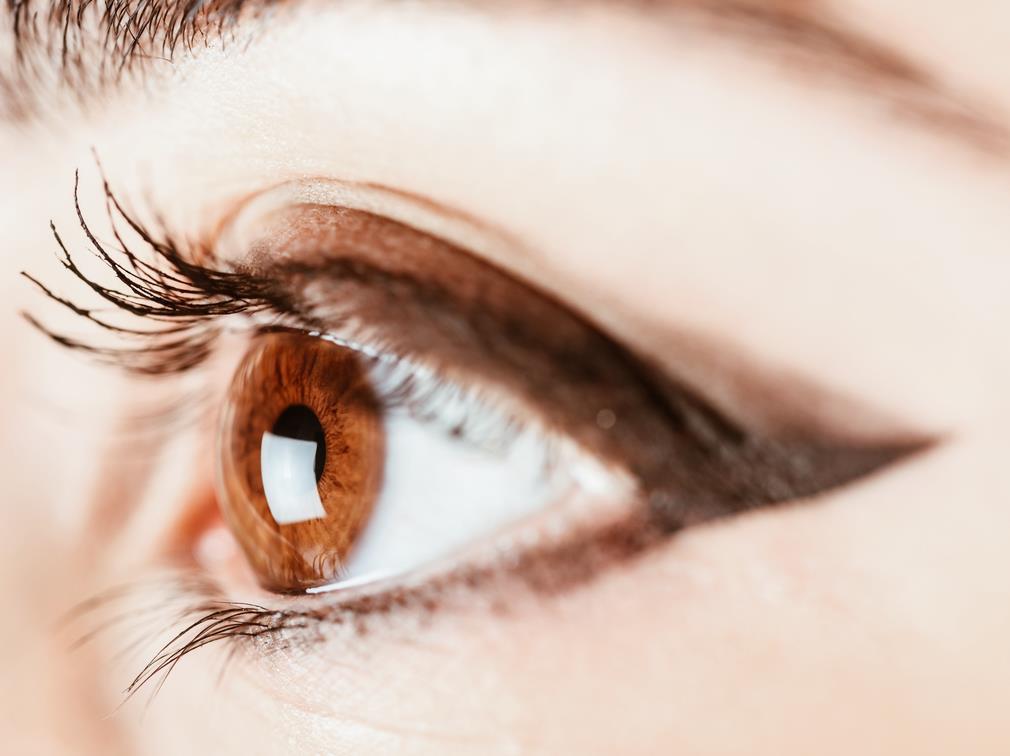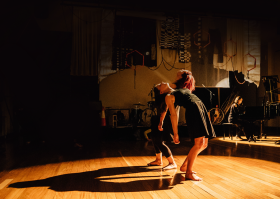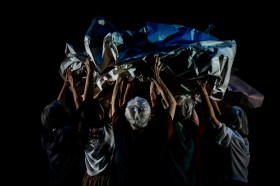‘The opposite of the male gaze, if taken literally, would mean visual arts and literature depicting the world and men from a feminine point of view, presenting men as objects of female pleasure,’ observed Jill Soloway, in a recent talk at the Toronto International Film Festival.
It’s an idea that appeals not one iota to Soloway. ‘Pass. We don’t want that. NOT BUYING IT,’ she said.
So if the female gaze is not a straightforward reversal of the male gaze, what is it? How is it performed and developed on stage and screen?
These questions were unpacked at a recent panel at the Women of the World Festival, held at Footscray Community Arts Centre. The forum worked through an intersectional focus on gender, race, language and perspectives outside the cis gendered and white mainstream.
The term “male gaze” was coined by Laura Mulvey in her essay “Narrative Cinema and Visual Pleasure” in 1975. It is the masculine point of view, the “normal” perspective on things, which we have come to accept as mainstream and which dominates the way that art forms depict the world we live in.
Soloway describes it this way. ‘Scene starts, open on: a pair of perfect tits. A bartender adds the flourish to two pina coladas, said tits place the drinks on the tray, carries the tray to a table where two people are talking. Tits sets down the drinks and – scene begins. Classic male gaze.’
By contrast the female gaze gives agency to those characters typically objectified by the male gaze – women, people of colour, non-binary people.
Soloway, who is best known for creating Transparent, a television drama centred on a parent’s gender transition, said the female gaze implies a different way of communicating: ‘I can tell a woman wrote and directed it because I feel held but something that is invested in my FEELING in my body, the emotions are being prioritised over the action.’
Seeing and being seen
Writer and performer Candy Bowers said the female gaze is interesting to her on a deeply personal and professional level as it is something she has experienced ‘whole-bodily’ throughout her career as an actor.
‘I remember growing up watching TV and going to see plays at Bell Shakespeare and Belvoir in Sydney, musicals and all that kind of thing, and seeing representations of young girls and it was always white women. It was probably in my early twenties when I started to realise that I just couldn’t relate. I probably could never relate, but as a kid I was always hopeful,’ she said.
‘Slowly or quickly, it depends on how you look at it, I started to realise that the person who wrote the plays, all the plays I was seeing, were men and a really large slab of the directors who were directing those women were also men. I got to this intersection of race and gender and I was like “Ok, this is not how I see the world, this is not how my life works either, this is going to be really interesting for me being in my body” and wondering how I would navigate it all. And really I didn’t get to navigate it all because nobody would ask me to audition for any of those roles so I had to create my own. In doing that, I created my own radical black feminist dream.’
The problem Bowers identifies is a familiar one, echoed in recent debates on the erasure of women’s stories, the representation of women of colour in producing and directing roles, and revisionist accounts of her-story. We have arrived at a moment where we are fed up with the white male story line, she said.
While the female gaze can emphasise a marginalised perspective it also shows us how it feels to be the object of the gaze. This is a distinguishing feature for Soloway, who said it shows ‘how it feels to be seen’ and from this acknowledgement of objectification it creates empathy for the subject and her story. Another aspect Soloway identifies is how the female gaze dares to return the gaze. Flipping traditional narrative tropes it says, ‘WE SEE YOU, SEEING US.’
It is also important to problematise the construct of the female gaze itself in the hope that it can be left open and fluid as a non-binary space of representation and marginalised perspective.
‘I find [the female gaze] slightly problematic because for me it still implies this binary point of view that talks about art making and I would like to open that up and if we are trying to make work that, like what I am trying to make, work that runs counter to the dominant culture or tries to pull out white masculinity in narrative forms then can we open up the idea of an alternate gaze that actually encompasses all women, people of colour and, I guess, people who have been oppressed by the structures of patriarchy?’ filmmaker Amos Gebhardt asked during the panel.
This is a question that we need to continue exploring. But as theatremaker Chi Vu said, perhaps the female gaze is just the beginning of an important conversation for stage and screen and a way into creating a safer cultural space for artists to work in.
‘For me the female gaze is a starting point and it’s to claim some space away from the male gaze but then I would hate for that to be codified and then there is a way to do a female gaze and if you aren’t doing it that way, then you’re not doing the “female gaze”. I would prefer it to be a starting point for exploring a whole lot of other multitudes,’ said Vu.
This article is based on the Women of the World Festival panel The Female Gaze on Stage and Screen, held at Footscray Communitys Arts Centre. Jill Soloway’s keynote can be read in full on https://www.toppleproductions.com/the-female-gaze





